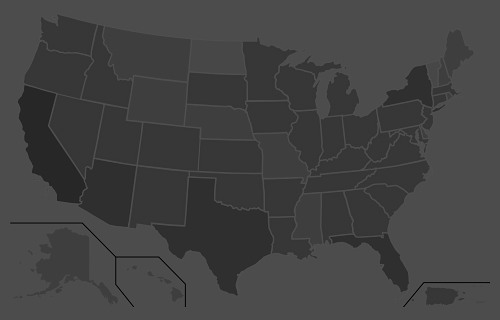“Our added winter moisture and active calling period led to a very long nesting and hatching season, starting in late April and extending into early summer, with chicks hatching as late as early July,” O’Dell said. “From a population standpoint, we are out of a deficit for the first time since 2001-2002. Quail are starting to pop up in places they haven’t been seen in a while.
“If you’ve never had the chance to experience what Arizona quail hunting built its name on, then this would be the year to get out and enjoy it.”
Meanwhile, hunters should note that the season for Mearns’ quail doesn’t begin until Dec. 4. It’s summer rainfall that plays a key role in nesting success and population numbers of this species. After a spotty and relatively weak monsoon across southern Arizona, these birds are likely to be abundant only in pockets that received sufficient precipitation this summer.
A valid Arizona hunting or combination hunt and fish license is required for all hunters 10 and older. Those hunters under 10 must either have a valid hunting or combination hunt and fish license, or be accompanied by an adult who possesses a valid hunting or combination hunt and fish license. Licenses can be purchased online or at license dealers statewide. A youth combination hunt and fish license (ages 10 to 17) is $5.
The general bag limit is 15 quail per day in the aggregate, of which no more than eight may be Mearns’ quail (when the Mearns’ season opens Dec. 4). The general possession limit is 45 quail in the aggregate after opening day, of which no more than 15 Gambel’s, scaled or California quail in the aggregate may be taken in any one day. After the opening of the Mearns’ season, the 45-quail possession limit may include 24 Mearns’ quail, of which no more than eight may be taken in any one day.
More quail-hunting information can be found on the department’s website at https://www.azgfd.com/Hunting/. Another resource for both new and experienced hunters alike is “An Introduction to Hunting Arizona’s Small Game.” Written by Randall D. Babb, the 196-page, full-color book covers where and how to hunt small game birds (like quail), squirrels, rabbits, ducks and geese. It also includes how to prepare and cook your harvest, with illustrations and recipes. The book can be ordered for $16.95 at www.azgfd.gov/publications.
Finally, hunters should check out O’Dell’s techniques for field-dressing quail at https://www.youtube.com/watch?v=3gRwZAcWzzk.
####
Publishers Notes: OUT OF STATE HUNTERS, FISHERMEN & OUTDOOR ENTHUSIASTS; Due to the Covid 19 pandemic, there could be limitations for OUT of STATE hunters, fishermen and other outdoor enthusiasts to include a 14-day quarantine requirement or negative COVID-19 testing alternative. Please check with the State's Department of Natural Resources BEFORE you travel or apply for the 2020 Fall Hunts.
Marine Knots
Useful Knots and Hitches for Boaters such as the Bowline, Anchor Bend or Anchor Hitch and the Sheepshank. Rope used in boating is durable and expensive and is often handling heavy loads, e.g., when berthing, mooring, towing another vessel, preparing for a storm, or managing sails. The emphasis, therefore, is on safety, reliability, and convenience. In contrast to the fishing knots, value is also placed on being able to use the rope repeatedly and untie each knot without difficulty.
The Backcountry Press
There are a large variety of knots for the outdoors including hunting, fishing or boating and each knot has specific properties and suitability for a range of tasks. Some knots are well-adapted to attach to particular objects such as another rope, cleat, ring, or stake. Other knots are made to bind or constrict around an object. Choosing the correct knot for the job at hand is one of the most fundamental aspects of using knots well. (Some Video Instructions are Included)
© 2020 TBC Press - All Rights Reserved Website Design by:
K N O T S
Bowline - "The Boater's King of Knots"
If you're only going to learn one knot this season, here it is. The bowline is a very versatile knot. It is used to form a temporary loop in a line which may then be put over a piling or cleat. It can also be used to attach a line to an eye. This knot won’t slip or jam and can be untied easily.
Anchor Bend or Anchor Hitch
This knot is generally used to fasten a line to an anchor. The free end should be secured with seizing to the standing line for a permanent, secure knot. One side of a Double Fisherman's also makes a good backup knot to this and any knot.
Safety: For load-bearing using modern high modulus ropes such as Spectra, Dyneema or Kevlar/Technora, use a Triple Fisherman's. In each stopper knot the rope is passed around a third time before being threaded back through the loops. The triple, or even quadruple, version is also used by fishermen to join two lengths of fishing line.
Sheepshank
A sheepshank can be used to shorten a length of rope or to take the strain off a worn area of rope. The worn area must be in the center turn of the knot so that the tightened outer turns bear the weight.









